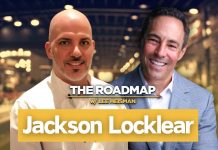Following up with prospects is a crucial yet often dreaded task in sales. Many professionals struggle with the right approach, resorting to vague check-ins that yield little success. In this episode of The Small Business Show, host Jim Fitzpatrick sits down with Matt Easton, founder of Easton University, to break down a proven system that simplifies follow-ups, increases engagement, and accelerates deal closures.
Easton identifies three types of follow-ups that salespeople encounter and provides a strategic approach for each. The biggest mistake sales professionals make is using phrases like “just following up” or “checking in.” These passive approaches lack urgency and often lead to unreturned calls or emails. Instead, Easton emphasizes the importance of positioning oneself as a trusted authority.
Strategic approaches for each type of follow-up
For new leads who haven’t been contacted before, Easton suggests opening with: “I wanted to reach out personally to make sure my team got you all the information you needed.” This immediately shifts the dynamic from a generic follow-up to a personalized, value-driven interaction. Prospects are more likely to engage when they see the salesperson as a knowledgeable resource rather than just another vendor trying to make a sale.
For prospects who have engaged but haven’t committed, Easton recommends removing hesitation with a direct approach: “I wanted to call to see if it makes sense to [take action].” Whether it’s visiting a store, signing a contract, or placing an order, this phrasing encourages prospects to make a decision without feeling pressured.
The third and most frustrating scenario involves prospects who promised to act but haven’t followed through. Many salespeople make the mistake of asking, “Do you have any questions?” This opens the door for unnecessary objections. Instead, Easton advises a proactive approach: “Wanted to make sure you have the link to execute the order. I’m sending it now.” This subtle yet powerful shift maintains control of the conversation and gently nudges the prospect toward action.
The psychology behind effective follow-ups
A key reason Easton’s system works is that it eliminates decision fatigue. When prospects are given an open-ended follow-up, they often delay because making a choice requires effort. By providing clear, action-oriented language, sales professionals remove uncertainty and make it easier for prospects to move forward.
Furthermore, Easton highlights that sales professionals must reframe their mindset. Instead of fearing follow-ups as intrusive, they should view them as an essential part of delivering value. A well-structured follow-up is not about pushing a sale but about ensuring the prospect has everything they need to make an informed decision.
By shifting away from vague inquiries and towards clear, results-driven communication, sales professionals can significantly increase their success rate while reducing frustration. Easton’s approach is not only simple but also highly effective, allowing sales teams to close deals faster and with greater confidence.
"When you ask, ‘Do you have any questions?’ it’s like pulling the pin on a hand grenade and sitting on it." – Matt Easton







